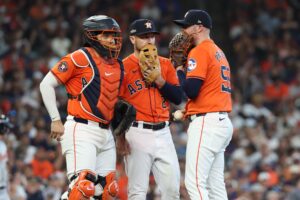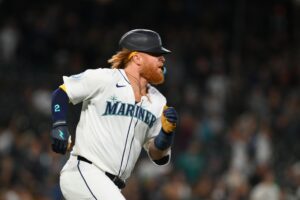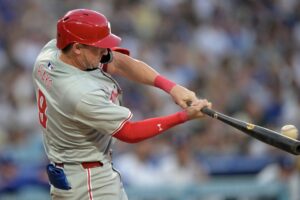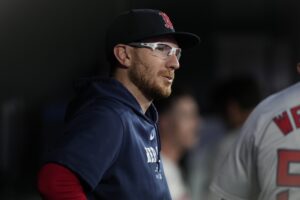The Los Angeles Dodgers 2016 Season ended on a low, with the team having fallen short yet again off their fourth consecutive National League West division title. However, looking back on where the team was at coming out of Spring Training, and with some unexpected events throughout the season, the Dodgers hung around longer than one should have expected.
Los Angeles Dodgers 2016 Season Recap
The Dodgers finished the 162 game season, 91-71. With the way the Dodgers front office came out of the off-season, many would say that this was an accomplishment in itself.
In an unprecedented move, Andrew Friedman and company would 2015 let Zack Greinke not only leave Los Angeles via his player option, but allow him to sign with the division rival Arizona D-Backs. Naturally, many expected the Dodgers to make a big splash to replace Greinke, but the Dodgers would come up with quieter signings in Kenta Maeda, and Scott Kazmir. All this while the San Francisco Giants would lock down Johnny Cueto and Jeff Samardzija. For the first time since the great trade of 2012, the Dodgers ownership had taken a passive approach in locking down and going after big names.
The Dodgers would elect to upgrade their much needed bullpen instead, and did so in a way at the time, didn’t seem like an upgrade. Joe Blanton, whose days as a starter didn’t end well with Dodgers early in his career, returned to the organization as a reliever.
Even with the addition to the bullpen, the Dodgers still had gaping holes in their rotation. Hyun-Jin Ryu, Brandon McCarthy, and Brett Anderson would all start the season the disabled list, leaving the Dodgers with the most underwhelming rotation coming out of Los Angeles in years.
Consistent Baseball
Come April, though, the Dodgers would play consistent baseball. Ross Stripling, who the Dodgers put trust on early on in the season, would pitch a no-hitter in his debut start with the Dodgers against Giants, up until new manager Dave Roberts pulled him due to Striplings pre-planned pitch count.
Maeda, would home run in his debut as a Dodger, and overall would provide some early excitement in his early tenure in the Dodgers rotation.
Other players were picking up the slack outside of pitching. Trayce Thompson, would become a regular performer in the outfield, coming through many times in the clutch, and Justin Turner, would start red hot in one of his best years of his career, especially in the home run category. Former professional grocery store employee Andrew Toles, would become a staple in the Dodgers outfield late and into the postseason.
Corey Seager, who played in his official rookie year, made a strong push to be the National League MVP, if not just Rookie of the Year, batting .308, with 26 home runs and 72 RBIs.
Julio Urias, though shaky in his first couple starts, finished the year 5-2 in 15 starts, and became the youngest pitcher ever to start a game in the postseason for the Dodgers.
The team would lead the league with players on the disabled list in 2016, and Clayton Kershaw was not an exclusion.
On June 30th, the Dodgers placed Clayton Kershaw on the 15-day disable list , and the stint would be extended much further than that. The team wouldn’t budge, though. Ironically, the Dodgers would play their best baseball, in what many thought would have been the end of their season.
Six games out of first place on June 30th, the Dodgers found themselves four games ahead of the San Francisco Giants upon Kershaw’s return on September 9th. With a somewhat stabilized rotation consisting of Maeda, deadline acquisition Rich Hill, youthful Urias, and none other than Kershaw, the Dodgers would go on to clinch their fourth consecutive division title.
Biggest Disappointment: SportsNet LA Negotiations Sour Vin Scully’s Final Year
Disappointments on the field can be pointed out. Yasiel Puig’s demotion to Triple A Oklahoma City at a time in which the front office had completely given up on him after a trade for Josh Reddick, or what became apparent at the end of the season, the team’s straight up inability bat against left handed pitching. However, short of a World Series run, the biggest disappointment came off the field.
If you lived in the Los Angeles Dodgers TV territory, which spans all of Los Angeles and even into Las Vegas, NV, you went another year missing out on not just the Dodgers, but nearly all of Vin Scully’s final season calling play-by-play from Chavez Ravine, thanks to another year of failed negotiations between Charter Spectrum and pay TV providers.
Arguably, if the Dodgers didn’t have their current TV Deal, it’s possible they wouldn’t have the current ability to spend as lavishly on their roster as they have had since the deal was announced in 2013.
Nonetheless, teams can’t buy championships, and if the Dodgers and Charter Spectrum don’t budge soon at the negotiation table, the Dodgers ownership may not be able to try doing so for much longer. At the beginning of 2015, the Los Angeles Times reported that Time Warner (Now Charter Spectrum), had been losing over $100 million a year on SportsNet LA. The Dodgers and Charter Spectrum will hope that a recent Department of Justice suit against telecom giant AT&T will give them leverage at the negotiation table so they can begin recouping some of those losses at the start of 2017.
Until then, the Dodgers will need to continue improving on the field to keep fans from fleeing a team that makes it difficult for them to watch.
Main Photo:
Poll:






